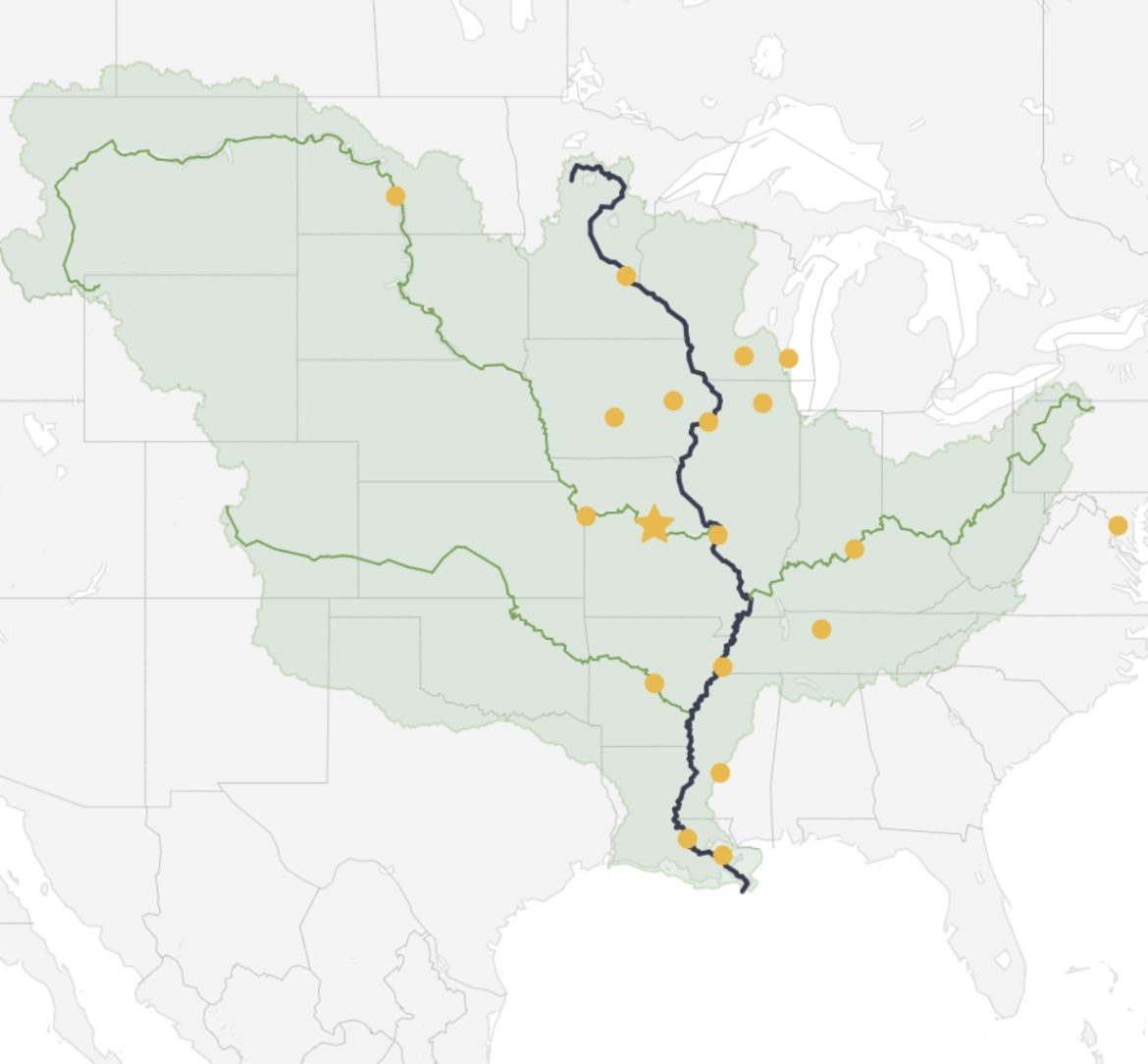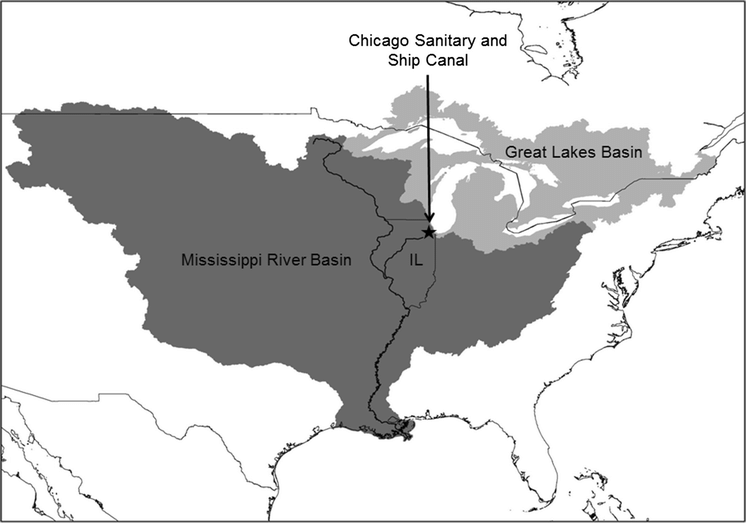By Kayla Nelsen
Editor’s note: This is one in a series of stories coming out of a recent meeting of the Society of Environmental Journalists in Philadelphia.

Map of the Mississippi River and Great Lakes-St. Lawrence basins that shows the artificial canal connection running through Illinois that has connected them since 1900. Wisconsin is part of both watersheds. Image: Mississippi River Basin Ag & Water Desk, Biological Invasions.
The Mississippi River Basin and the Great Lakes-St. Lawrence River Basin supply freshwater and drain wastewater for millions of people.
Two of the largest watersheds in the U.S., they span state and political boundaries.
The expanse of the watersheds across communities challenge the connecting of differing interests and collective policy to local readers. A panel of reporters from the region recently discussed best practices for reporting on watersheds at the Society of Environmental Journalists conference in Philadelphia.
Increasing public knowledge on watersheds is the foundational step to good watershed reporting, said Madeline Heim, an environmental reporter from the Milwaukee Journal Sentinel. Many Wisconsinites are unaware that Wisconsin is part of both the Mississippi River Basin and the Great Lakes-St. Lawrence River Basin.
“If we can bring people in on the most basic level and get them to understand the basin, then we can keep building on that knowledge to unlock interest and further learning,” Heim said.
Impactful environmental reporting requires knowledge about readership values and concerns. In a Journal Sentinel survey, nearly half of respondents said they experienced adverse effects from Mississippi River Basin changes like flooding and extreme weather.
“That helps me orient my coverage to make sure that I’m giving those worries attention,” Heim said.
Watershed issues are not isolated to county or state lines – they operate in a greater ecological system. It is important in watershed coverage to connect climate change experiences and environmental policies across communities, said Elizaeth Koebele, a political science professor at the University of Nevada-Reno.
“It’s a complex mix of trying to figure out what laws actually say and trying to get people to realize they live in a system where what happens upstream impacts downstream,” Koebele said. “That is a fundamental thing we’re still missing in Colorado River Basin reporting.”

Map of the Mississippi River and Great Lakes-St. Lawrence basins that shows the artificial canal connection running through Illinois that has connected them since 1900. Wisconsin is part of both watersheds. Image: Mississippi River Basin Ag & Water Desk, Biological Invasions.
Watershed policy can be nationalized to broaden readers’ perspective to the entire system, Heim said.
“Almost everything that happens locally, you can make a broader connection to it,” Heim said. “I don’t have to stay within state lines. I interview people from all over the river.”
The Mississippi River Basin Ag & Water Desk is a network of reporters from newsrooms across the basin that share resources to connect stories between states. In one case, a reporter from Tennessee helped a reporter from Louisiana access public records.
“We often support each other in getting the materials we need,” said Tegan Wendland, the network’s managing editor.
Reporters within the network meet regularly to workshop ideas and learn about each other’s reporting. This collaborative newsroom model is helpful in systematic environmental reporting, Wendland said.
“It all comes back to repeating over and over again the connections between watersheds,” Heim said. “There’s so much education involved in this beat.”
